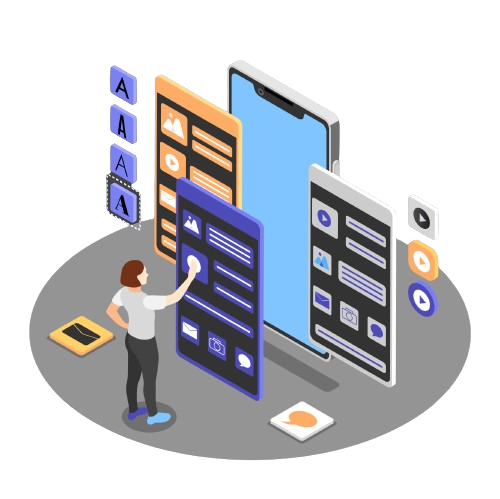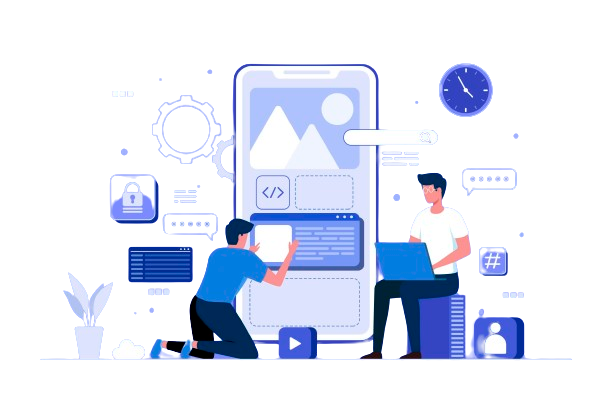In the bustling world of mobile applications, successful companies bring convenience and innovation at an intersection. But they often overlook one crucial aspect which is “accessibility”.
Imagine a world where everyone feels inclusive while using mobile apps. This is not just idealistic; accessibility in mobile apps is very much possible with conscientious design and development practices. Creating mobile apps where no user is left behind, including people with disabilities, also comes under social and moral responsibility.
In this article, we’ll walk you through the significance of accessibility in mobile app development, and why it matters in the digital landscape. Furthermore, we’ll also unveil best practices to ensure that everyone, regardless of the ability, can access and use your mobile apps.
Before delving into the core discussion, let’s take a brief overview of “what accessibility in mobile apps means?”
What is Mobile App Accessibility?
Designing and building mobile software/applications that are easy to use for all individuals, particularly people with disabilities, is known as mobile app accessibility. These disabilities encompass visual, hearing, motor and cognitive impairments. The aim of mobile app accessibility is to remove barriers to information, communication and services to the mobile apps for differently-abled users.
According to the World Health Organization (WHO), over a billion people are estimated to live with a handicap, hence accessibility must be taken as a priority over all other considerations.

Key Principles of Accessibility
The four key principles of mobile app accessibility (regarded as POUR) are as follows:
Perceivable:
This notion guarantees that the data displayed in the app is understandable to all users. In order to make material easier for users to see and hear, text equivalents for non-text content must be provided.
Operable:
All users must be able to use the navigation and user interface elements. This involves providing enough time for people to read and utilize content, and enabling all functionality using a keyboard.
Understandable:
Data and user interface functionality must be easy-to-understand and communicate to all users. This includes making material predictable in how it appears and behaves, making language legible and intelligible, and assisting users in avoiding and fixing errors.
Robust:
Information needs to be strong enough to work with and be accessible from a range of devices, including assistive technologies. This means that the content needs to be interpretable and accessible even as user agents and technology advance.
Sometimes, while creating mobile applications, businesses overlook the importance of accessibility or give accessibility features minimal consideration in favor of the main functionality of the app. However, businesses lose a significant portion of the market as well as their reputations when they release an application that is inaccessible to people with impairments. Even worse, they run the possibility of being accused of prejudice and discrimination. Such practices are not appreciable by the advocates of corporate social responsibility in the society.
What Accessibility is Important?
Accessibility is not just about ticking boxes for legal requirements, it is about ensuring ease of use and inclusivity to the digital resources for all users. A digital world where individuals with any kind of disabilities equally enjoy all mobile apps and software, is what’s the dream of mobile accessibility.
The need for accessibility becomes more evident in case of following cases:
Legal Compliance:
Many countries impose legal regulations and laws that mandate accessibility of digital products to all. If app developers or companies fail to comply with them, they’d face serious repercussions and permanent damage to the company’s reputation.
Expanded User Base:
By making apps accessible to all users, app developers can tap into a larger user base, including people with disabilities and older segments of the society. This can eventually lead to the usage of apps by more potential users and increase in revenue.
Desirable Brand Image:
Companies can achieve a positive reputation as their customers and the general public view them as socially responsible companies, fulfilling diversity, equity, inclusion, and other corporate social responsibilities.
Improved User Experience:
Not just people with impairments but all users often benefit from accessibility features. For example, voice commands allow hands-free engagement and captions help users in noisy surroundings and there are many more features.
Practical Tips & Strategies to Ensure Accessibility in Mobile Apps

Optimize App Content
Text, picture, and video data layouts are all included in application content. It is probable that some of your users experience visual impairments, hearing loss, color blindness, dyslexia, or other perceptual issues. Therefore, content optimization will make sure that every user, no matter how experienced, gets the most out of your mobile application.
Textual Content:
It is not advisable to distinguish between important text elements—that is, between text that denotes an action and regular text—only by color. A hyperlink marked with a different color won’t be visible to a colorblind individual, but they can still identify an underlined paragraph that contains a hyperlink.
Media Content:
Make sure that every prerecorded or live audio and video content has captions. Captions are an excellent method to explain what’s happening in a video or audio recording. subtitles help those who are hard of hearing as well as those who are now unable to wear headphones. Furthermore, adding an HLS player can improve accessibility by giving users the option to modify video playback parameters, such as captions and subtitles, to better meet their individual requirements and preferences.
Make Easy Data Entry
Easy techniques for data entry are crucial because text entry can be difficult and time-consuming for many users. One way to cut down on the amount of text needed is to include checkboxes and have data like the date and time automatically fill in. It’s also advised to include data sharing and autofill features.
Ensure Keyboard Accessibility to Maximize Smooth Navigation
Users with certain disabilities can’t interact with the touch screens. Therefore, it is important to ensure that all the functionalities and features of the app are accessible via keyboard navigation.
Similarly, users engage with your mobile application via their screens. They squeeze, scroll, double-tap, and tap. While it is okay for normal individuals, it can be quite challenging for those with physical impairments or low vision. It is recommended that you create app buttons that can be easily tapped by users and have different colors to help them stand out.
Test with Real Users & Accessibility Tools
To discover and address accessibility issues, conduct usability tests with people with disabilities and make use of accessibility testing tools. An amalgamation of manual and automated testing is the best choice for this purpose. Several testing methods ensure lower chances of failure to comply with the accessibility standards.
Wrapping Up
As awareness of accessibility issues grows, mobile application accessibility is becoming a hot topic. Users of mobile apps are not just more conscious of their rights, but law firms also lookout for ways to ensure and enforce ADA and WCAG guidelines.
Mobile app accessibility cannot be overlooked in any case. It should be adopted as an urgent practice by the mobile app development companies. We hope that it won’t be a challenging task for you to make your mobile apps accessible, with our detailed checklist at hand.
Don’t rely just on luck. Instead, take the required actions to guarantee that everyone, regardless of ability, may use your mobile app.
If you’re stuck midway, reach out to Stackup Solutions. We may help you the best to kickstart your mobile app accessibility project and ensure possible ways to welcome everyone in your mobile application.


.jpeg)

